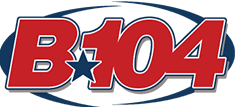
Changes to Itemized Deductions.
In addition to nearly doubling standard deductions, the TCJA changed several itemized deductions that can be claimed on Schedule A, Itemized Deductions.
You may not take the standard deduction if you claim itemized deductions. Alternatively, if you take the standard deduction, you may not claim itemized deductions. For married filing separate taxpayers, if one spouse elects to itemize, the other spouse is also required to itemize.
For 2018, the following changes have been made to itemized deductions that can be claimed on Schedule A.
Limit on Overall Itemized Deductions Suspended. You may be able to deduct more of your total itemized deductions if your itemized deductions were limited in the past due to the amount of your adjusted gross income. The old rule that limited the total itemized deductions for certain higher-income individuals has been suspended.
Deduction for Medical and Dental Expenses Modified. You can deduct certain unreimbursed medical expenses that exceed 7.5% of your 2018 adjusted gross income. Before this law change, unreimbursed medical expenses had to exceed 10% of adjusted gross income for most taxpayers in order to be deductible.
Deduction for State and Local Income, Sales and Property Taxes Modified. Your total deduction for state and local income, sales and property taxes is limited to a combined, total deduction of $10,000 ($5,000 if Married Filing Separate). Any state and local taxes you paid above this amount cannot be deducted.
Deduction for Home Mortgage and Home Equity Interest Modified. Your deduction for mortgage interest is limited to interest you paid on a loan secured by your main home or second home that you used to buy, build, or substantially improve your main home or second home. For example, interest on a home equity loan used to build an addition to an existing home is typically deductible, while interest on the same loan used to pay personal living expenses, such as credit card debts or buying a care, is not. As under prior law, the loan must be secured by the taxpayer’s main home or second home (known as a qualified residence), not to exceed the cost of the home and meet other requirements.
New Dollar Limit on Total Qualified Residence Loan Balance. The date you took out your mortgage or home equity loan may also impact the amount of interest you can deduct. If your loan was originated or treated as originating on or before Dec. 15, 2017, you may deduct interest on up to $1,000,000 ($500,000 if you are married filing separately) in qualifying debt. If your loan originated after that date, you may only deduct interest on up to $750,000 ($375,000 if you are married filing separately) in qualifying debt. The limits apply to the combined amount of loans used to buy, build or substantially improve the taxpayer’s main home and second home.
Limit for Charitable Contributions Modified. The limit on charitable contributions of cash has increased from 50 percent to 60 percent of your adjusted gross income.
Deduction for Casualty and Theft Losses Modified. Generally, net personal casualty and theft losses have been suspended, but can be deductible only to the extent they’re attributable to a federally declared disaster. Claims must include the FEMA code assigned to the disaster. The loss must still exceed $100 per casualty and the net total loss must exceed 10 percent of your AGI. In addition, you can still elect to deduct the casualty loss in the tax year immediately preceding the tax year in which you incurred the disaster loss.
15
Miscellaneous Itemized Deductions Suspended. The previous deduction for job-related expenses or other miscellaneous itemized deductions that exceeded 2 percent of your adjusted gross income is suspended. This includes unreimbursed employee expenses such as uniforms, union dues and the deduction for business-related meals, entertainment and travel, as well as any deductions you may have previously been able to claim for tax preparation fees and investment expenses, including investment management fees, safe deposit box fees and investment expenses from pass-through entities.
Click HERE to learn more about Tax & Accounting Plus






